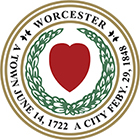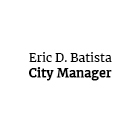


For Immediate Release: 10/28/2022 4:50 pm
WORCESTER – As flu season begins, Worcester is also experiencing an uncharacteristic rise in cases of respiratory syncytial virus (RSV). Combined with the ongoing COVID-19 pandemic, City health officials are urging residents to take precautions to stay safe, avoid surges, and prevent further strain on local and regional hospital systems.
RSV, which is contributing to a current spike in hospital visits—especially for children—and is correlated with school absences, is a common respiratory virus that usually causes mild, cold-like symptoms. While most affected people recover in one to two weeks, infants, young children, older adults, and those with chronic health conditions and weakened immune systems are susceptible to serious illness, including bronchiolitis and pneumonia.
Although there is no specific treatment or vaccine for RSV, spread can be prevented by covering your nose and mouth when coughing or sneezing, washing your hands with soap and water, cleaning infected surfaces, and staying home when sick. Anyone experiencing severe symptoms such as decrease in appetite, fever, or wheezing should contact their doctor.
Considering the particular risk to children and potential for spread in schools and daycare facilities, health officials strongly recommend masking for children at least two years of age, as well as for family members, caretakers, and anyone else in close contact with infants and other high-risk individuals. Children with symptoms of respiratory illness, especially fever, should remain home until symptoms have cleared.
Face coverings are also recommended for all residents while indoors and around others, and while in crowded outdoor public spaces and events to reduce the risk of flu and COVID-19.
As with RSV, flu poses a particular risk to children, older adults, and individuals with chronic health conditions. While symptoms can be mild, flu can also lead to serious illness, hospitalization, and even death. Flu season typically peaks between December and February and can last through May. Residents can get more information, including prevention tips, at worcesterma.gov/public-health/health-topics/flu-prevention.
Health officials remind residents that the best way to avoid serious complications related to flu and COVID-19 is by being up to date on vaccines, and it is safe to receive both a flu and COVID-19 vaccine dose at the same time. Parents and caretakers of students are also asked to make sure their children are up to date on all school-mandated vaccines to avoid potential increases in other diseases.
This season’s flu vaccine is now available at most local pharmacies, and locations can be found at vaccines.gov/flu.
COVID-19 vaccines and boosters are also available at pharmacies, as well as at the ongoing weekly free clinics open to the public across the City:
Now through Dec. 19, anyone who receives a dose at Monday’s YMCA clinic or Saturday’s Worcester Public Library clinic will receive a $75 dollar gift card courtesy of the Massachusetts Department of Public Health, while supplies last.
A full schedule of vaccine and booster clinics around the City can be found at worcesterma.gov/coronavirus/vaccination.
COVID-19 Update
The City’s COVID-19 data dashboard is updated every Friday and is available at worcesterma.gov/coronavirus.
As of Oct. 28, the seven-day daily average of new positive COVID-19 cases in Worcester is 22.9, which is a decline of about 10 over the last two weeks and the lowest since June. The City’s two-week test positivity rate is 5.57 percent, and COVID-19 levels in wastewater have consistently declined over the past week.
While recent trends in cases and wastewater and encouraging, officials caution that residents should maintain precautions as new variants arrive and indoor gatherings increase during the fall, winter, and holiday seasons. In 2021, case rates similarly decreased in October before rising through November and spiking after Thanksgiving.
Worcester County’s Community Level remains at Medium since being elevated from Low by the Centers for Disease Control and Prevention on Sept. 23. A total of 556 Worcester residents have passed away due to COVID-19, including 30 who have died since the City’s COVID-19 memorial dedication on Mar. 29.
Sixty-five percent of Worcester residents are now fully vaccinated, and 76 percent have received at least one dose. Of those fully vaccinated, 53 percent have received a booster dose.
The updated bivalent boosters are now available to eligible individuals who are at least five years old. They have been formulated specifically to protect against Omicron variants and have shown to offer better protection against even the most recent subvariants than a vaccine primary series alone. Fully vaccinated individuals are eligible for the updated booster at least two months after their last dose, whether it was the final of a primary series or a previous monovalent booster.
Fully vaccinated individuals ages 18 and older may also now instead choose to receive a Novavax booster shot at least 6 months after receiving the last dose of a primary series. Individuals who previously received any Pfizer or Moderna booster are not eligible for a Novavax booster.
The seven-day daily averages of new positive cases over the last week in Shrewsbury and Grafton were 5.6 and 1.7, respectively.
In addition to the ongoing Citywide mask advisory, face coverings remain mandatory at Worcester hospitals and in school health offices. Any other business, institution, or organization may also enact its own mask requirement, and mask advisory signs remain available to download on the City’s website.